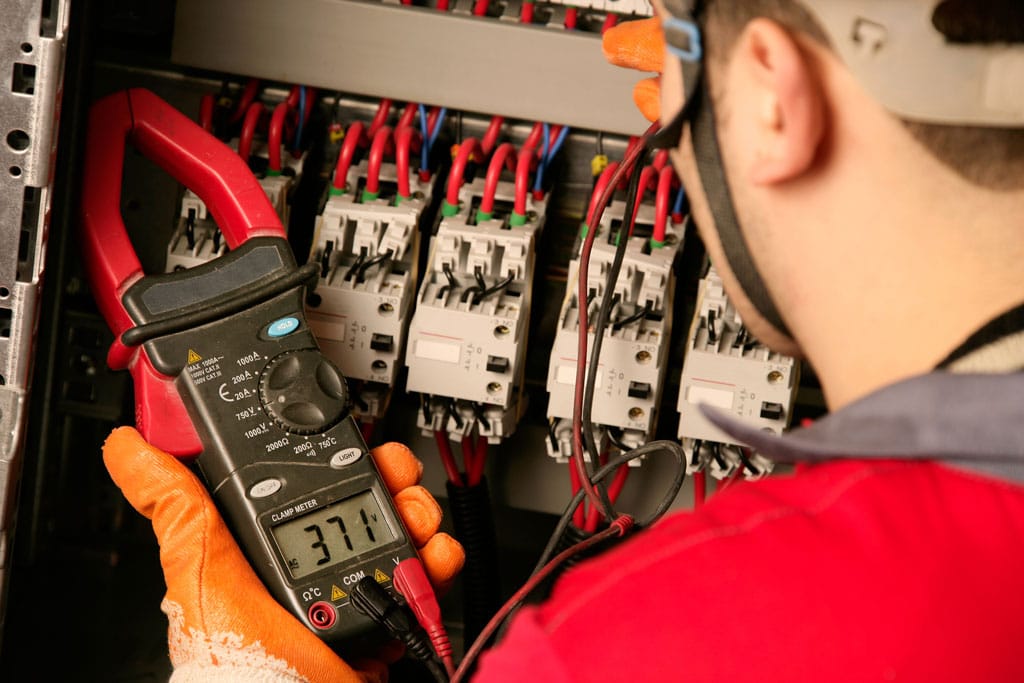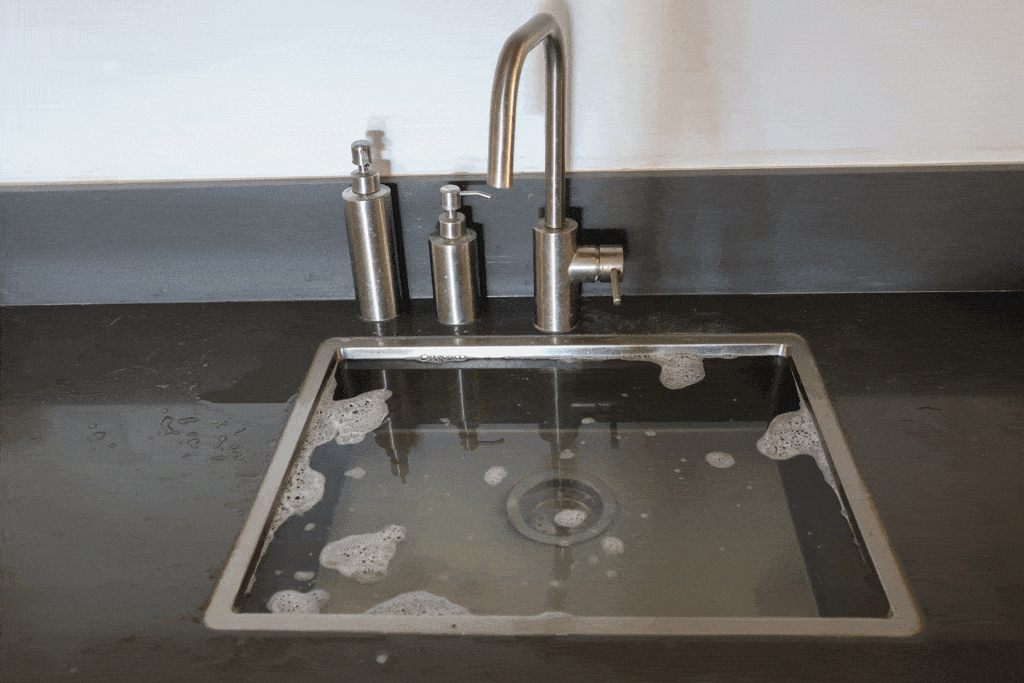Worried about electrical overloads in your home? Understanding what they are and how they happen can save you from potential hazards like electrical fires.
In this article, we’ll explore the causes, signs, and prevention tips to help you manage your home’s electrical system effectively. These insights will keep your home safe and sound.
By recognizing the signs and knowing how to prevent overloads, you can ensure your electrical system operates smoothly and efficiently. Keep reading to protect your home and loved ones from the dangers of electrical overload.
Understanding Electrical Overloads
Electrical overloads are similar to carrying too many groceries at once—eventually, something will give. Your home’s electrical system has a maximum capacity, and exceeding this can lead to trouble.
An overload occurs when too many appliances or devices draw power from a single circuit, which can cause it to overheat and may even trip your circuit breaker.
This is the system’s way of warning you, “Too much at once!” If not managed, overloaded circuits can escalate into serious hazards, including electrical fires.
It’s like overloading an extension cord; too many demands can lead to failure. Grasping this concept is key to maintaining electrical safety in your home.
Common Causes of Electrical Overloads
Too Many Devices on One Circuit

Plugging in multiple high-power devices like a microwave, toaster, and coffee maker into the same outlet can cause an electrical overload. Each of these devices draws a significant amount of power, and together they exceed the circuit’s capacity.
When this happens, the circuit can overheat, trip the breaker, and potentially cause damage to your electrical system.
Overloaded circuits are a common problem in kitchens where many appliances are used simultaneously. To prevent this, try to distribute your appliances across different outlets and circuits.
Old Wiring
Older homes in areas like Bedford, TX, Euless, TX, and Grapevine, TX, might not have wiring designed for modern electrical loads. This outdated wiring can struggle to support the number of devices typically used today.
Over time, the insulation around the wires can degrade, increasing the risk of electrical overload and potential fire hazards. Old wiring systems may not be able to handle the power needs of today’s technology and appliances.
Upgrading old wiring is essential for preventing these issues and ensuring your home can handle current electrical demands.
Faulty Appliances
Appliances that are not working properly can draw more power than they should, leading to electrical overloads. This excess power draw can easily overload your circuits and cause issues.
Faulty appliances often have damaged wiring or internal components that fail to regulate power consumption effectively.
Regular maintenance and timely replacement of old or malfunctioning appliances can help prevent overloads and maintain a safe electrical system. By keeping your appliances in good working order, you reduce the strain on your electrical circuits.
Signs of an Overloaded Circuit
Tripped Circuit Breakers
One of the most obvious signs of an overloaded circuit is a tripped circuit breaker. When a circuit draws too much current, the breaker shuts off to prevent overheating.
This safety mechanism is designed to protect your home from electrical fires by cutting off the power supply to the overloaded circuit. If you find yourself frequently resetting the breaker, it’s a clear sign that the circuit is overloaded.
This repetitive tripping indicates an underlying issue that needs addressing by a professional electrician.
Dimming or Flickering Lights
Another common sign of an overloaded circuit is dimming or flickering lights. If your lights dim or flicker when you turn on another appliance, it means the circuit is under strain and struggling to supply enough power.
This happens because the circuit is trying to supply too much power at once, causing the lights to dim or flicker. Flickering lights are not just annoying; they can also be a sign of a more serious electrical problem that needs immediate attention to prevent potential hazards.
Warm or Discolored Wall Plates
Warm or discolored wall plates around your outlets and switches are also red flags of an overloaded circuit. When circuits are overloaded, the excess current can cause the wiring to heat up.
This heat can then transfer to the wall plates, causing them to become warm or discolored. If you notice this, it’s crucial to address the issue promptly to prevent potential fires.
Ignoring warm or discolored wall plates can lead to serious electrical fires and damage to your home’s electrical system.
Burning Smell from Outlets
A burning smell coming from your outlets is a serious warning sign of an overloaded circuit. This smell indicates that the wiring or the outlet itself is overheating, which can lead to dangerous situations.
Overloaded circuits can cause wires to heat up and potentially burn the insulation, leading to a fire hazard. If you detect a burning smell, turn off the power immediately and contact an electrician to assess and fix the problem before it escalates.
Buzzing Sounds from Electrical Fixtures
Lastly, buzzing sounds from your electrical fixtures can indicate an overloaded circuit. These sounds occur when the current struggles to flow through the wires due to the excess load, causing vibrations and buzzing noises.
The buzzing is often a sign that the wires are vibrating under the strain of an overloaded circuit. Ignoring this sound can lead to more severe electrical issues down the line, including potential electrical fires and system failures.
Assessing Your Electrical System
Evaluating Your Home’s Electrical Capacity
The first step in assessing your electrical system is to evaluate its capacity. Your home’s electrical capacity is determined by the size of the main electrical service panel, typically measured in amperes (amps).
Modern homes usually have panels rated at 100 to 200 amps, which can handle the electrical demands of today’s appliances and devices. If your home has a lower-rated panel, it might struggle to support modern electrical loads, leading to overloads.
Identifying High-Risk Areas in Your Home
Certain areas of your home are more prone to electrical overload. Kitchens, for example, often have multiple high-power appliances like microwaves, ovens, and refrigerators, all drawing power simultaneously.
Similarly, home offices with computers, printers, and other electronic devices can also be high-risk areas. By identifying these high-risk zones, you can take proactive measures to distribute the electrical load more evenly and avoid overloads.
Practical Tips to Prevent Electrical Overloads
Distribute Electrical Load Evenly
One of the simplest ways to prevent electrical overload is to distribute your electrical load evenly. Instead of plugging all high-power appliances into a single outlet or circuit, spread them out across multiple circuits.
For example, if your kitchen has several appliances, plug them into different outlets that are on separate circuits. This approach reduces the strain on any single circuit and helps balance the electrical load throughout your home.
Additionally, avoid using extension cords or power strips to connect multiple high-power devices to a single outlet, as this can quickly lead to an overload.
Avoid Overloading Circuits
It’s crucial to avoid overloading circuits by understanding the capacity of each circuit in your home. Most standard circuits can handle about 15 to 20 amps, which is sufficient for typical household devices but can be exceeded if too many high-power devices are used simultaneously.
Keep track of how many devices you have plugged into each circuit and their power requirements. Using power strips or extension cords can be tempting, but this often leads to overloading.
Instead, consider installing additional outlets or circuits if you find you need more power in certain areas. For instance, if your home office has multiple computers and peripherals, it might be wise to have a dedicated circuit installed.
Use Energy-Efficient Appliances
Switching to energy-efficient appliances can significantly reduce the risk of electrical overload. Modern energy-efficient appliances use less power, which means they put less strain on your electrical system.
Look for appliances with Energy Star ratings, as these are designed to consume less electricity without sacrificing performance. This not only helps prevent overloads but also reduces your overall energy consumption and utility bills.
Replacing old, inefficient appliances with newer, energy-efficient models can make a noticeable difference in your home’s electrical load.
Unplug Devices When Not in Use
Another effective way to prevent electrical overload is to unplug devices when they’re not in use. Many devices continue to draw power even when they’re turned off, a phenomenon known as phantom load.
By unplugging devices like chargers, kitchen appliances, and entertainment systems when they’re not needed, you can reduce the overall electrical load on your circuits.
This simple habit can make a big difference in preventing overloads and saving energy. It’s a good practice to develop a routine of unplugging devices before leaving the house or going to bed.
Upgrade Your Electrical System if Needed
If your home frequently experiences electrical overloads, it might be time to upgrade your electrical system. Upgrading to a higher-capacity service panel, installing additional circuits, or updating old wiring can all help manage the increased demand for electricity.
Homes in areas like Bedford, TX, Euless, TX, and Grapevine, TX, especially older ones, may benefit from these upgrades to support modern electrical needs safely.
Consulting with a licensed electrician can provide you with a detailed assessment and recommend the necessary upgrades to keep your home safe and efficient.
Electrical Safety Measures
Install Circuit Breakers and Fuses
One of the most important safety measures is to install circuit breakers and fuses. Circuit breakers and fuses are designed to automatically shut off power to a circuit when it becomes overloaded, preventing overheating and potential fires.
This automatic shutoff is a crucial safety feature that protects your home from electrical hazards. Ensure your home’s electrical panel is equipped with properly rated breakers and fuses that match your electrical system’s specifications.
Regularly test and replace them as needed to keep your electrical system functioning safely. Without properly functioning circuit breakers and fuses, your home is at a higher risk for electrical fires and damage due to electrical overloads.
Regularly Inspect and Maintain Wiring
Regular inspection and maintenance of your home’s wiring are essential to prevent electrical issues. Over time, wiring can degrade, leading to potential hazards such as electrical overloads and shorts.
Schedule routine checks with a licensed electrician to inspect your wiring for signs of wear and tear, such as frayed wires or loose connections.
They can identify and fix any issues before they become serious problems, ensuring your electrical system remains in good condition. Proper maintenance of your wiring helps prevent electrical overloads and keeps your home safe from electrical hazards.
Use Surge Protectors
Using surge protectors can help protect your devices and appliances from power surges, which can occur during storms or due to electrical overloads.
Surge protectors absorb excess voltage and prevent it from damaging your electronics, ensuring that sudden spikes in electricity don’t fry your valuable equipment.
Plug important devices like computers, TVs, and other sensitive equipment into surge protectors to safeguard them from unexpected power spikes.
Investing in high-quality surge protectors provides an extra layer of protection against electrical overloads and enhances the longevity of your electronics.
Professional Help and When to Seek It
When to Call an Electrician
It’s essential to call an electrician if you notice persistent electrical problems, such as frequent tripped breakers, flickering lights, or outlets that feel warm to the touch. These issues often indicate underlying problems that need professional attention.
For example, tripped breakers and flickering lights can signal electrical overloads that, if ignored, might lead to severe damage or even fires.
Additionally, if you’re planning significant upgrades, like adding new appliances or rewiring parts of your home, a licensed electrician can ensure the work is done safely and up to code.
This is particularly important in older homes in areas like Bedford, TX, Euless, TX, and Grapevine, TX, where the existing electrical system might not meet current safety standards.
Benefits of Professional Electrical Inspections
Regular professional electrical inspections offer several benefits that contribute to the safety and efficiency of your home. Professional inspections help identify and address potential issues before they become serious problems, such as electrical overloads or outdated wiring that could pose fire hazards.
An electrician can evaluate your home’s electrical capacity, check the condition of your wiring, and recommend necessary upgrades or repairs.
These inspections not only enhance the safety of your home but also improve the efficiency and longevity of your electrical system, ensuring that it can handle modern electrical demands.
Moreover, having a professional inspect your system regularly can provide peace of mind, knowing that your home is protected against potential electrical issues.
Don’t Risk It—Let Tioga Secure Your Electrical Safety Today!
Are you experiencing electrical issues in Bedford, TX, Euless, TX, or Grapevine, TX? Don’t wait for small problems to become big hazards! Trust Tioga Plumbing & Electric to keep your home safe and efficient.
Our licensed electricians are ready to handle any electrical overloads, upgrades, or inspections you need. With our expertise and commitment to quality, we ensure your electrical system is up to code and functioning perfectly.
Contact us today at (682) 224-0757 to schedule an inspection or service and take the first step towards a safer home. Your safety is our priority!
Frequently Asked Questions (FAQ)
How Can I Tell if My Circuit is Overloaded?
You can tell if your circuit is overloaded if you frequently experience tripped circuit breakers, dimming or flickering lights, or warm and discolored wall plates. Additionally, if you notice a burning smell or hear buzzing sounds from outlets or fixtures, these are clear signs of an electrical overload.
What Should I Do if I Suspect an Overload?
If you suspect an electrical overload, first unplug some devices to reduce the load on the circuit. Check your circuit breaker panel for any tripped breakers and reset them if necessary. If the problem persists, it’s best to contact a licensed electrician to assess and resolve the issue safely.
How Often Should I Have My Electrical System Inspected?
It’s recommended to have your electrical system inspected by a professional every 3 to 5 years. However, if you live in an older home or frequently experience electrical overloads, you should consider more frequent inspections. Regular inspections help identify potential problems early and ensure your electrical system remains safe.
Are Older Homes More Susceptible to Overloads?
Yes, older homes are often more susceptible to overloads. This is because they may have outdated wiring and electrical panels that weren’t designed to handle modern electrical loads. Upgrading the electrical system in older homes can help prevent these issues and improve overall safety.
Can Smart Home Devices Help Prevent Overloads?
Yes, smart home devices can help prevent electrical overload by monitoring and managing your electrical usage. Smart plugs and circuit breakers can track how much power each device uses and alert you if a circuit is at risk of overloading.
Taking a bite out of Your Plumbing & Electrical needs
Other Electrical & Plumbing Services

Taking a bite out ofYour Plumbing & Electrical needs
We make fixing your home easier than ever. Whether it’s a leaky pipe, faulty wiring, or an urgent repair, our experts deliver fast, reliable solutions you can count on.

















